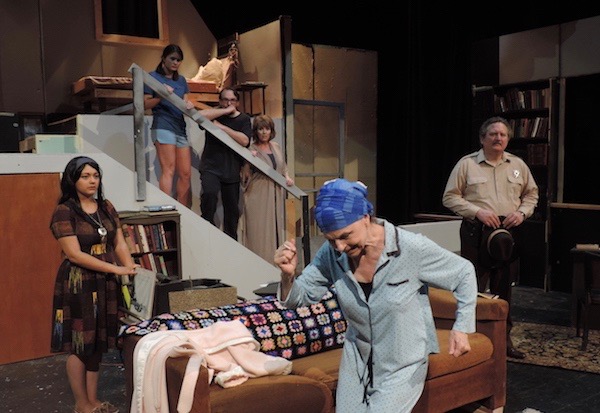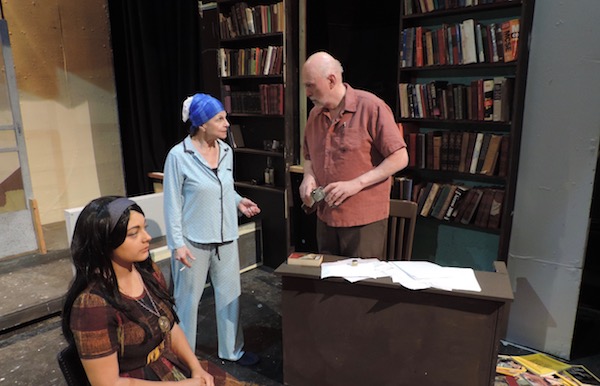By Mario Muscar
Last week, I was fortunate to be able to go see the closing play of Towngate’s 2017-2018 season, “August: Osage County.”
It is somewhat rare that I get to go into a show with little knowledge, but this time, I was fortunate enough to do just that. I have never read the play, nor have I seen it. I also have never watched the 2013 film adaptation starring Meryl Streep and Julia Roberts.
So I was excited that I was able to go into a show fresh and with no preconceived notions. Sure, I know that the play is a dark, tragic comedy. I know that it is has a large cast and that it has some wonderful roles for women. But that was about it. And I enjoyed what I saw.
Note: Some minor plot points/spoilers follow.
First, let me say that the cast does a great job at conveying the dysfunction and pain that these characters experience. And that is no small feat with such a large cast of 13 performers. But this group of actors comprised of both seasoned and new performers takes the script by Tracy Letts and makes it real on the stage. I recognize some of these characters. I have dealt with them in my own life, and I am sure that anyone who sees this performance with feel the same way to some degree.
One thing that really stuck with at me in the show was how it portrays addiction. The matriarch of the family, Violet Weston, is addicted to multiple medications, including opioids. This really hits home as this state and the Upper Ohio Valley have a massive addiction problem to these types of drugs. We live in an area where, in one night in the last year, there were three overdoses in about a half-mile radius of each other. So this is really relevant to our community and lives.
Violet (portrayed in the Towngate production by Judy Hennen) has given into the addiction, and it has become part of her life. And these are all prescription pills that she is obtaining legally. The play really shows that the face of addiction is not always what you suspect. It can affect anyone.
Hennen Gives Superb Performance as Violet
Speaking of Judy, I thought that her performance really carried the show and was the cornerstone of this production. Whenever she was on the stage, I was drawn to watching her and listening to what she would say. Violet Weston is not a character you root for or you even like, but she is certainly someone that is massively engaging and interesting. And Judy conveyed that in her superb performance.
By the time we get to the second and third acts of the play, the family is dealing with emotions and secrets that shake the family to its core. The entire cast does a fine job of telling a story that delivers some serious gut punches and pulls at the very center of your being.
Kudos to the entire cast: Aimee Kathleen Schultz, Abby Delk, Pete Fernbaugh, Brigitte Ann Donahie Mazure, Justin Swoyer, Rob DeSantis, Judy Hennen, John Reilly, Evan Oslund, CJ Farnsworth, Jeremy Richter, Vera Barton-Maxwell, and Dana Applegate, as well as Butch Maxwell, who is making his Towngate Theatre directorial debut with this show.
Do yourself a favor and go see it.
About “August: Osage County”
“August: Osage County” is a black comedy by American playwright Tracy Letts. Centering on a tense family reunion in a small Oklahoma town, the play is dominated by Violet Weston, an eccentric family matriarch who has a contentious relationship with her husband and children. When a family tragedy brings all the survivors together again, old wounds and hurts are reopened as the family is forced to confront its past and presence. It has been staged around the world and in 2013 was adapted into a star-studded feature film including Meryl Streep and Julia Roberts, both of whom received Academy Award nominations.
Get Tickets
Remaining performances for Towngate Theater’s production of “August: Osage County” by Tracy Letts are May 18-19. Curtain is at 8pm.
Admission is $12.50/$11 OI members. Purchase tickets for this show or any Towngate show in advance at www.oionline.com, by calling 304-242-7700, or at the door, if available.






